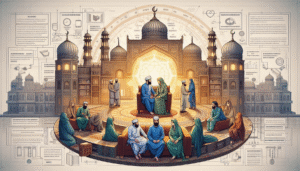
Male Victims of Human Trafficking

Human trafficking is a global issue that affects millions of people each year. While it is commonly believed that women and children are the only victims of this heinous crime, it is important to recognize that men and boys can also fall prey to human trafficking.
Male trafficking victims face unique challenges and obstacles, and their experiences are often overlooked or minimized. In this article, we will explore the issue of male trafficking and its impact on victims.
According to the United Nations Office on Drugs and Crime (UNODC), approximately 21% of all trafficking victims are male, and this number could be even higher due to underreporting and lack of awareness. There are several forms of male trafficking, including labour trafficking, sex trafficking, and forced marriage.

Labour trafficking involves the exploitation of men and boys for forced labour in various industries such as agriculture, construction, and mining. Sex trafficking of males involves the exploitation of men and boys for commercial sex acts, while forced marriage occurs when men are forced into marriages against their will.
One of the biggest challenges that male trafficking victims face is the lack of recognition and support. Due to societal norms and stereotypes, many people assume that men cannot be victims of trafficking or that their experiences are less severe than those of women and girls. This can make it difficult for male victims to access support services and can lead to feelings of isolation and shame.
Another challenge facing male trafficking victims is the lack of specialized services. Many support services for trafficking victims are geared towards women and children, leaving men with limited options for assistance. This can make it difficult for male victims to access appropriate medical and mental health care, legal support, and other critical services.
Male trafficking victims also face unique psychological challenges. Many male victims experience shame, guilt, and stigma due to their experiences, which can make it difficult for them to seek help. They may also struggle with feelings of emasculation and loss of power, as well as a sense of betrayal by those who exploited them.

In addition to these challenges, male trafficking victims also face significant physical risks. Many men are forced to work in dangerous conditions or endure physical abuse and violence at the hands of their traffickers. This can result in long-term physical health problems, as well as psychological trauma.
Despite these challenges, there are organizations and initiatives working to support male trafficking victims. The UNODC has launched a Global Action to Prevent and Address Trafficking in Persons and the Smuggling of Migrants initiative, which seeks to increase awareness and support for male victims of trafficking. There are also several NGOs and advocacy groups working to raise awareness about male trafficking and provide support services to victims.
To effectively address male trafficking, it is important to increase awareness and education about the issue. This includes recognizing the unique experiences and challenges faced by male trafficking victims and working to overcome societal norms and stereotypes that perpetuate the idea that men cannot be victims of trafficking.
It also means increasing resources and support services for male trafficking victims, including specialized medical and mental health care, legal assistance, and access to education and job training. In conclusion, male trafficking is a serious and often overlooked issue that affects men and boys around the world.
These victims face unique challenges and obstacles, including a lack of recognition and support, limited access to specialized services, and psychological and physical risks. It is critical that we increase awareness and education about male trafficking, and work to provide specialized support and resources to help these victims rebuild their lives.
References:
United Nations Office on Drugs and Crime. (2018). Global Report on Trafficking in Persons. Retrieved from https://www.unodc.org/documents/data-and-analysis/glotip/2018/GLOTiP_2018_BOOK_web_small.pdf
International Labour Organization. (2017). Global Estimates of Modern Slavery. Retrieved from https://www.ilo.org/wcms







